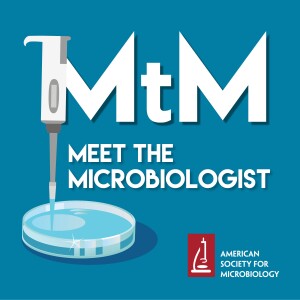
Viral gastroenteritis around the world causes 200,000 deaths globally each year. Mary Estes talks about her work on 2 gastroenteritis-causing viruses, rotavirus and norovirus, and tells the story of her discovery of the first viral enterotoxin. She also describes how noroviruses have changed from human volunteer studies to studies using “miniguts,” a system now used with many enteropathogenic microorganisms.
Julie’s Biggest Takeaways:
Rotaviruses and noroviruses kill 200,000 people annually, despite an available rotavirus vaccine and current anti-infective measures. Rotavirus is generally associated with gastrointestinal disease in the very young and the very old, while norovirus infects people at all life stages.
Rotavirus is so stable that even when viral samples are extremely dessicated by lyophilization, the samples remain perfectly infectious. Rotavirus stability is largely due to 3 concentric capsid cells.
NSP4 is a rotavirus enterotoxin, and the first viral enterotoxin to be discovered. It affects the concentration of the intracellular calcium pools. By activating the calcium chloride channel, NSP4 forces chloride and water to be excreted, directly leading to diarrhea. NSP4 is secreted from infected cells and can also disrupt calcium concentrations of neighboring cells, amplifying the effect of a single infected cell.
Rotarix® and RotaTeq® are 2 different attenuated rotavirus vaccines. One contains a single attenuated viral strain while the other contains 5 attenuated viral strains; both vaccines have high efficacy in developed countries and slightly lower efficacy in developing countries. Why vaccine efficacy is lower in developing countries is uncertain, with many hypotheses including microbiome-based effects under study now.
Human enteroids, or “miniguts,” offer insight into complex virus-cell interactions. These stem-cell derived miniguts can be generated from different types of animal stem cells, and the enteroids they become reflect the same host-barrier restriction as the animal of origin. The miniguts can be used to culture many sorts of viruses and other microorganisms, such as bacteria and protozoa.
Links for this Episode:
Mary Estes Website at Baylor College of Medicine Hyser J.M. et al. Rotavirus Disrupts Calcium Homeostasis by NSP4 Viroporin Activity. mBio. 2010. Crawford S.E. et al. COPII Vesicle Transport is Required for Rotavirus NSP4 Interaction with the Autophagy Protein LC3 II and Trafficking to Viroplasms. J Virology. 2019. Ettayebi K. et al. Replication of Human Noroviruses in Stem Cell-Derived Human Enteroids. Science. 2016. In J.G. et al. Human Mini-Guts: New Insignts into Intestinal Physiology and Host-Pathogen Interactions. Nat Rev Gastroenterol Hepatol. 2016. Finkbeiner S.R. et al. Stem Cell-Derived Human Intestinal Organoids as an Infection Model for Rotaviruses. mBio. 2012. Henning S.J. and Estes M.K. Women in Science: Hints for Success. Gastroenterology. 2015. Kapikian A.Z. et al. Visualization of a 27-nm Particle Associated with Acute Infectious Nonbacterial Gastroenteritis. Journal of Virology. 1972. HOM Tidbit: Smith K.N. The Iron Long was just an Engineer’s Side Project. Forbes. 2019. HOM Tidbit: Ramirez M. Living Inside a Canister: Dallas Polio Survivor is One of Few People Left in U.S. Using Iron Lung. Dallas Morning Star. 2018.
More Episodes
 2022-10-01
2022-10-01
 2021-06-10
2021-06-10
 2020-04-23
2020-04-23
Create your
podcast in
minutes
- Full-featured podcast site
- Unlimited storage and bandwidth
- Comprehensive podcast stats
- Distribute to Apple Podcasts, Spotify, and more
- Make money with your podcast
It is Free
- Privacy Policy
- Cookie Policy
- Terms of Use
- Consent Preferences
- Copyright © 2015-2024 Podbean.com





